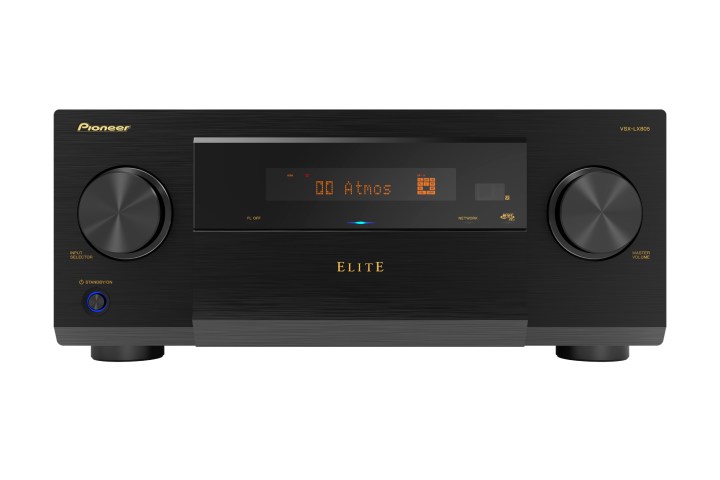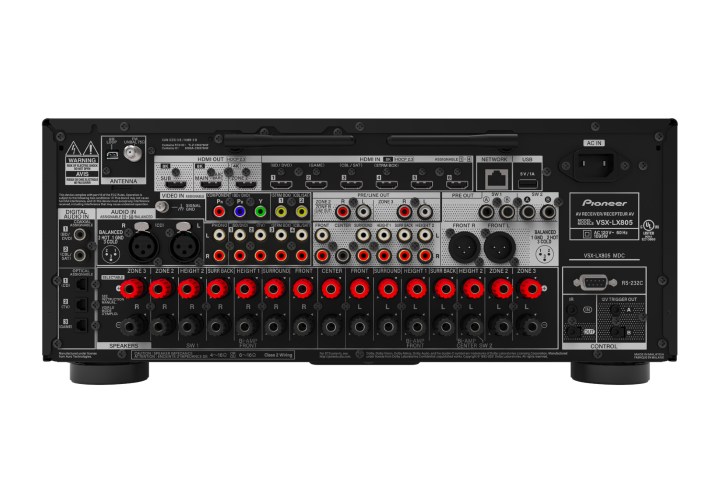Pioneer electronics makes some of the best AV receivers money can buy, and its flagship Pioneer Elite brand is about to push that envelope further with the announcement of its latest AVR (audio video receiver), the Elite VSX-LX805. The 11.2.4-channel network receiver will be available this Spring for a premium $2,999, but that big price gets you big power at 150 watts per channel, a new 32-bit digital audio converter, some AI-driven room calibration, and some audiophile upgrades.

The Pioneer Elite VSX-LX805 is the first Pioneer receiver to be designed in cooperation with Premium Audio Company since its licensing agreement with Pioneer/Pioneer Elite in 2021, which put them in charge of marketing and selling the brands’ AVR business globally (except in China). PAC is a powerhouse of home audio gear, with huge brands under its umbrella, including Klipsch, Onkyo, Teac, and Energy, so expectations are high for its new arrivals.
Building from Pioneer Elite’s previous models in its VSX range, the VSX-LX805 usurps them all with its 150 watts per channel that powers 11 channels with powerful Class AB amplifiers that are kept cool and managed by newly-designed aluminum anti-resonant heat sinks and capacitors. A substantial upgrade from its predecessor, 2021’s 9-channel VSX-LX505, the LX805 adds an additional Height channel (two in total), an additional Zone channel (for three in total), and with the help of external preamp connectivity, the LX805 can achieve up to an 11.2.4 surround system.
The Elite VSX-LX805 includes some industry-leading DAC support with the inclusion of two audiophile-grade ESS Sabre ES9026PRO 32-bit, 8-channel digital audio converters, that Pioneer says delivers “exceptional audio performance and studio-level processing for the discerning AV enthusiast.” This also means it will bode well with any hi-res
Among the connections of the LX805 are six HDMI 2.1 inputs that deliver 8K/
While the VSX-LX505 was one of the first Pioneer AVRs to feature Dirac’s popular Dirac Live Room Correction technology, the LX805 takes it to the next level with the company’s premium-tier Dirac Live Room Correction Full Bandwidth suite included, which uses AI-driven algorithms to scan and analyze your room to configure the AVR to the best sound. And if you’ve ever set up a subwoofer on your own, you might appreciate a bit of help with an available upgrade to the Dirac Live Bass Control software, too, which will run you an additional $349 for a single subwoofer and $499 for multiple subs. That said, the Dirac Live feature does require an internet connection, so for those not able to connect (or don’t want to), Pioneer also has its legacy MCACC room-tuning option available, too.

For an AVR of this caliber and price point, it’ll be no surprise that the VSX-LX805 supports Dolby Atmos,
A couple of welcome features that have been carried over from the LX505 and other VSX models include multi-room support in the form of a Sonos Certified designation, which means that you can connect the LX805 to your existing Sonos system with the use of a
The Pioneer Elite VSX-LX805 is also voice assistant-compatible with Alexa,
Editors' Recommendations
- Cambridge Audio’s CXA81 Mk II amplifier gets a tune-up and a sweet new DAC
- Pioneer’s latest budget-friendly Dolby Atmos AV receivers start at $379
- Audio-Technica’s latest hi-res earbuds debut at CES 2024 for $199
- Pioneer, Elite, Integra, and Onkyo flagship AV receivers get a major update
- Qualcomm’s new Wi-Fi chips are poised to revolutionize wireless audio






